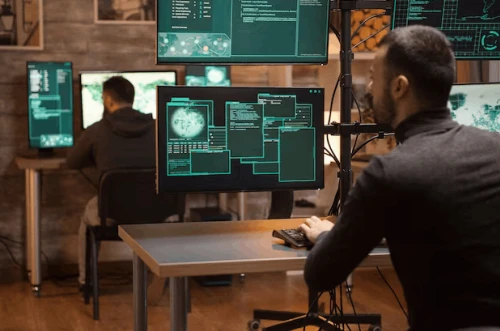Exploring Linux 6.10: Guide to Key Security Enhancements & Updates for Admins

The Linux 6.10 release has generated considerable interest in the technology community. This is especially true among system administrators responsible for maintaining and securing networks and systems.
Linus Torvalds - the man behind the Linux kernel - commented on the importance of this release. "Linux is not just a number." This release brings significant improvements that will change how we look at security and efficiency within Linux systems. In this article, I'll walk you through the security improvements that Linux 6.10 brings and advise you on how to upgrade.
Linux 6.10: What Security-related Changes Have Been Made?
 The following changes have been made in Linux 6.10 to enhance Linux security:
The following changes have been made in Linux 6.10 to enhance Linux security:
- Addition of the mseal() System Call: Adding the mseal() system call is a highlight of the Linux 6.10 release. This marks a significant leap forward in the Linux ecosystem's security, as it prevents modifications to memory areas within a process. Torvalds says, "The addition of mseal() represents a significant step in our efforts to make Linux systems more resilient against attacks that involve memory manipulation." This additional layer of memory protection will be especially useful for applications that require tight security measures to protect against vulnerabilities.
- Filesystem Progressions: The filesystem has significantly improved in Linux 6.10, including a new protocol to control NFS servers and an improved FUSE subsystem for integrity protection. These improvements ensure data authenticity and integrity, crucial to maintaining secure Linux environments.
- Bluetooth and Driver Safety: The release, which includes Bluetooth support for MediaTek MT7922, enhances wireless communication security by improving hardware compatibility and bolstering security.
- Enhanced Arm Support: Linux 6.10 is focused on security, reflected in the Arm architecture enhancements, especially for ARM64-based systems. The userfaultfd() Write-Protect adds an essential layer of protection while improving system responsiveness.
How Will Admins Benefit from These Changes?
Security enhancements in Linux 6.10 provide system administrators with critical tools to strengthen defense mechanisms, including:
- Sandboxing Memory Protection: mseal() allows for more secure application operation, which is essential to maintaining critical processes' integrity and security.
- EnsuredFile Integrity: FUSE's integrated fs verify support allows administrators to protect against unauthorized file modification, preserving the integrity of system data.
- Improved Bluetooth security: The kernel's improved handling of Bluetooth communications mitigates potential wireless vulnerabilities.
Next Steps & Final Thoughts: How Can I Upgrade to Linux 6.10?
 Linus Torvalds urges administrators to upgrade to Linux 6.10. He says, "Upgrading Linux 6.10 does not only mean adopting the latest feature but also making a conscious decision toward a safer and more reliable system." Here's how you can upgrade:
Linus Torvalds urges administrators to upgrade to Linux 6.10. He says, "Upgrading Linux 6.10 does not only mean adopting the latest feature but also making a conscious decision toward a safer and more reliable system." Here's how you can upgrade:
- Backup Your System: Before upgrading, ensure you have a copy of all critical data and configuration settings.
- Check Compatibility: Verify that the hardware and software configurations are compatible with Linux 6.10. Drivers and third-party apps will continue to work.
- Update Your Repository: Prepare for the upgrade by updating your repository with the Linux 6.10 package.
- Install the New Kernel: Use your distribution's package manager to install Linux 6.10.
- Restart Your System: After the upgrade, restart your system and check the kernel version to ensure the update succeeded.
- Test System Functions: Extensively test the updated system to ensure all services work correctly with the new kernel.
These steps will allow system administrators to take advantage of the enhanced security and new features in Linux 6.10. Torvalds concludes, "Adapting the latest kernel is critical for maintaining security, stability, and efficiency in your computing environment." This advice is especially relevant for administrators who want to ensure their systems remain secure in a digital world that is constantly evolving.


















